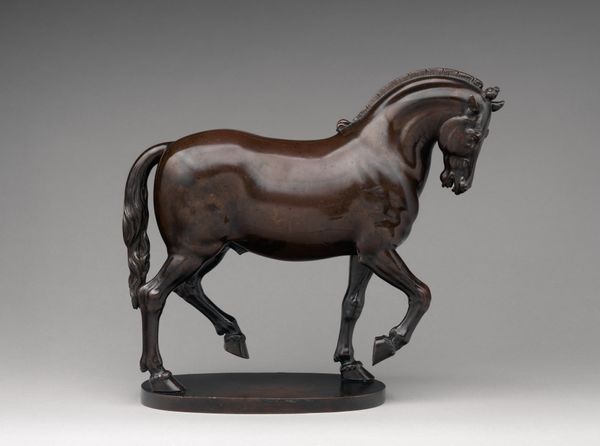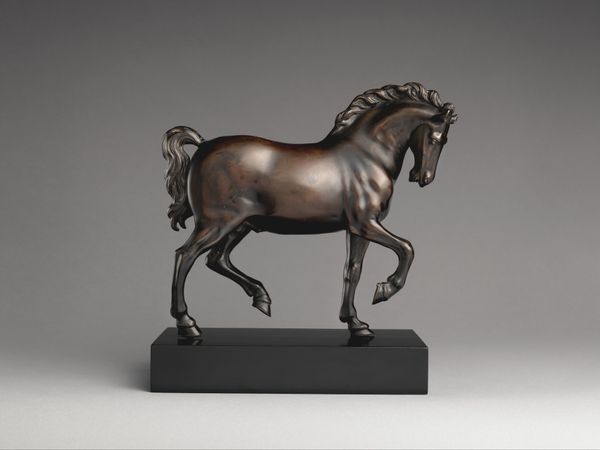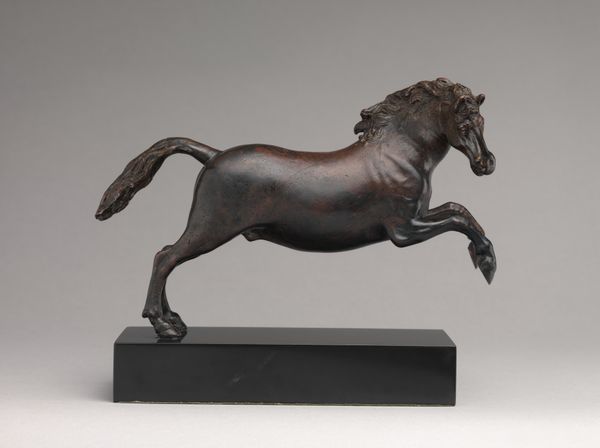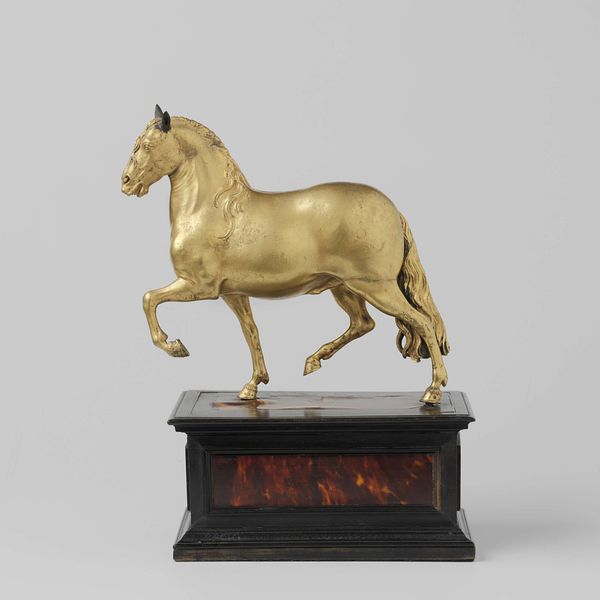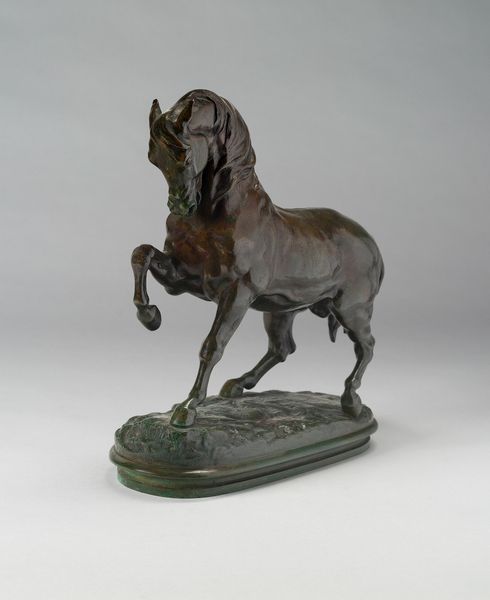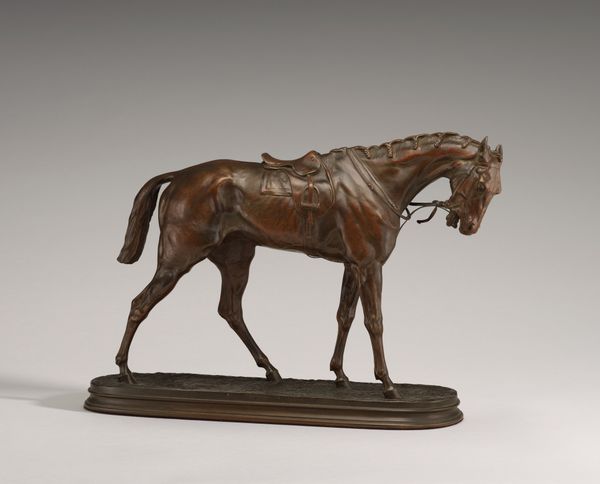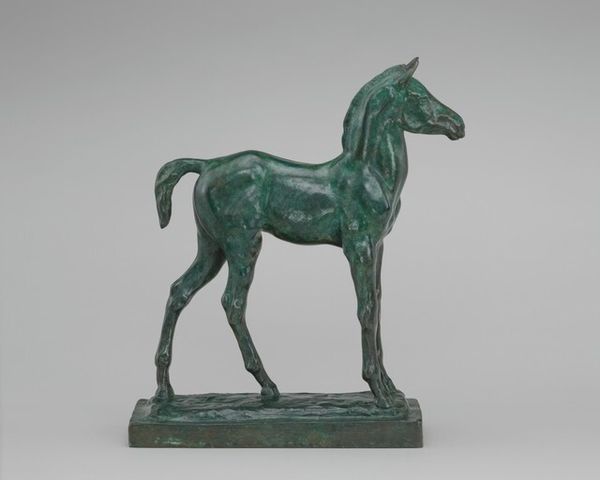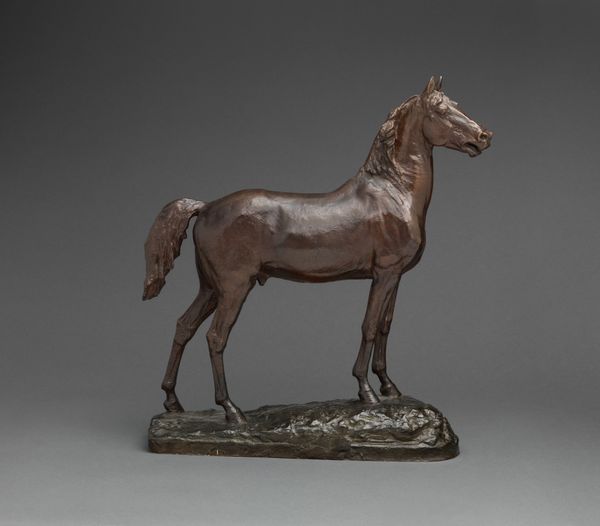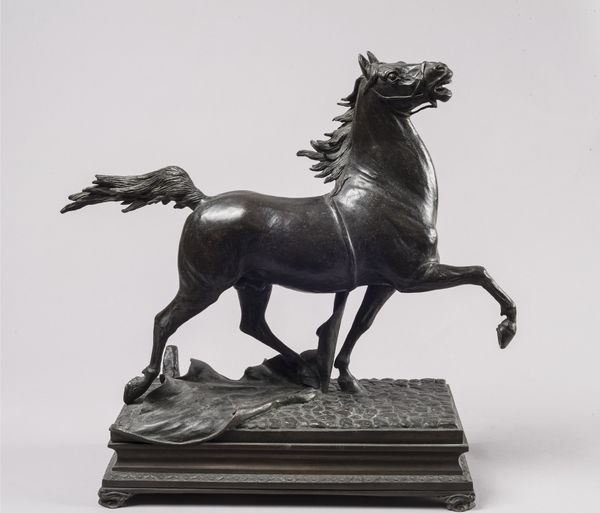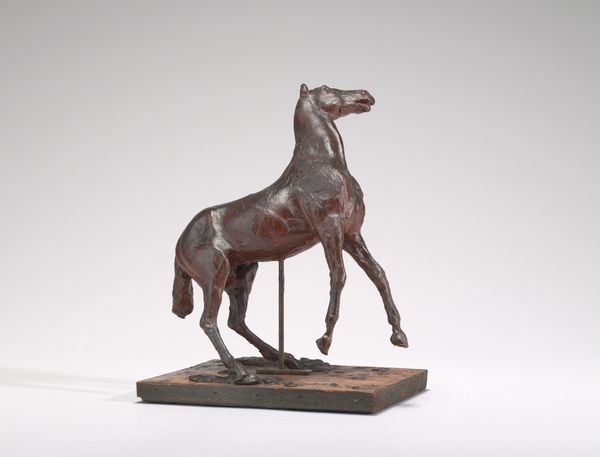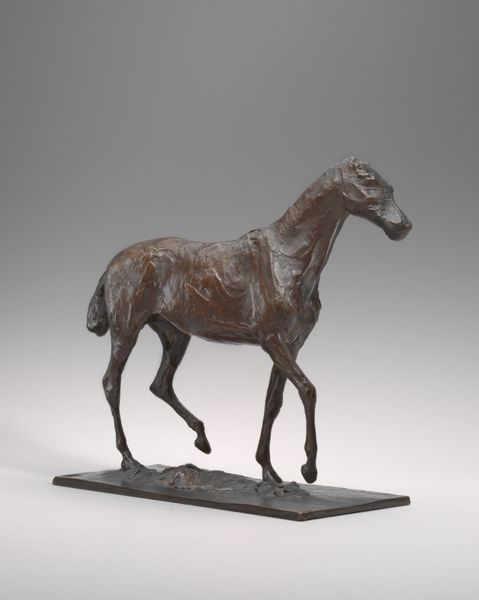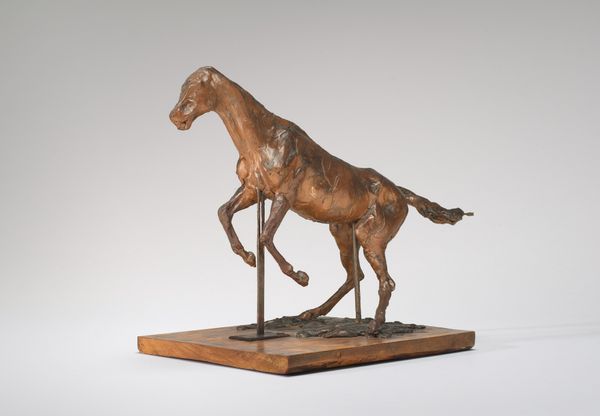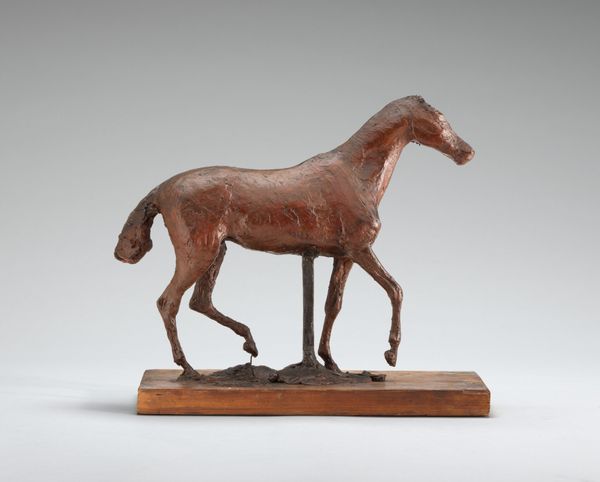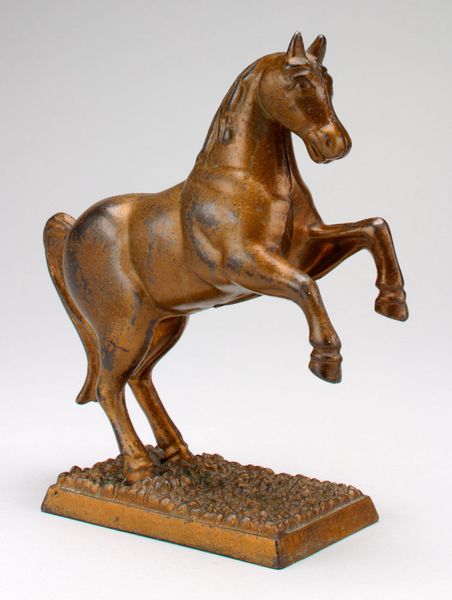
Dimensions: Overall (confirmed): 9 1/2 × 10 1/2 × 3 1/4 in. (24.1 × 26.7 × 8.3 cm)
Copyright: Public Domain
Editor: Here we have "Trotting Horse," a bronze sculpture by Giambologna, created sometime between the 18th and 19th centuries. It feels so dynamic, almost frozen mid-stride. How do you read this piece in its historical context? Curator: This sculpture reflects a shifting relationship between art and power. Consider the Baroque style—notice how the horse isn't simply standing, but captured in active motion. Think about the rise of absolutist power during that period. Equestrian portraits of rulers were a key propaganda tool. Does this sculpture, divorced from a rider, serve a similar symbolic function? Editor: I hadn't thought of it like that. So, even without the rider, it's still about power, or maybe potential power? It's interesting how the sculpture being made of bronze might relate. Curator: Exactly. Bronze, a durable and costly material, elevated the subject. We might ask: who was commissioning these works, and where were they displayed? Were they purely decorative, or did they project a specific kind of authority and taste? Keep in mind the increasing influence of wealthy merchant classes, keen to emulate aristocratic tastes, also influenced trends. Editor: It's fascinating to think of this "Trotting Horse" not just as a beautiful object but as an active participant in social and political conversations of its time. Something as simple as where someone chose to display this could make a statement. Curator: Precisely. Appreciating art necessitates understanding its active role in shaping and reflecting the values of a specific society. By examining such issues, it opens dialogue that remains meaningful today.
Comments
No comments
Be the first to comment and join the conversation on the ultimate creative platform.
